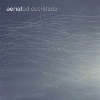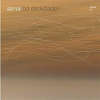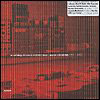Compositions » Aerial
Notes from Aerial #1
I’ve written before of my interest in shortwave radio, in the notes to the Quatermass CD. Also, in the notes to the Omniphony CD (which has my first ‘Aerial’ mix, Past Prelude in it), I mentioned ‘The Aerial Etudes’, which was my working title for what became the three CDs you have. And, at the end of an interview with Chris Cutler, the piece I mentioned was starting to work on at the time became ‘Aerial’.
When I was very young, people got most of their entertainment from radio. They called it ‘playing the radio’, as if it were a musical instrument. That’s what I’ve tried to do in this piece.
The mixing of the work began in 1990. Before that, I’d been collecting the sound-materials from an old shortwave radio I had. I worked at night because that’s when the best reception occurs; during the day, short-wave sounds are limited and scarce - at least the kind I was listening for: the kind that occur when there are so many stations on the air, they over-ride each other and something strange emerges from the conflict.
Because shortwave AM radio is of the lowest possible fidelity (little better than a telephone), I recorded on ordinary audio-cassettes. It was also for economy, because I knew I’d have to do a lot of recording to capture the momentary events I was looking for. Periodically, I would transfer the best (most potentially useful) of these recordings to quarter inch tape, turning them into ‘hi-fi stereo’ as I did, with a variety of techniques.
Slowly, eventually, I made a library of 72 reels of tape and 35 DAT cassettes, for a total of about 90 hours of sound. Each track was given a descriptive name, and catalogued.
I found that many of the tracks, though they were ‘electronic’ by nature, sounded not unlike the sounds I’ve used before in my work: bells, voices, drums, strings, trains, water, wind… And, in the mixing, I went for that physical sound.
I began mixing in October of 1994. For this, I had two old Ampex 2-track tape machines and two, newer, DAT decks - giving me the possibility of eight tracks of feed. (This is the same amount I had for my ‘Quatermass’ and ‘Apocalypse’ LPs.)
Everything was sent, analogue, to a third DAT: my first digital pieces (or parts of pieces). Eventually, I had 580 2-track mixes, on 16 DATs, and I was facing transferring the best of these back to analog tape, for final, physical editing - the old razor-and-splicing-tape technique, which was all I knew.
About this time, a few people encouraged me to look into using a computer for this work. I’d never used one, but I saw it would allow me to keep my mixes digital - no more transfer losses. So, at the end of 2001, I got a computer and an editing program for it, and spent what seemed a long time learning it. I began selecting mixes and loading them into the computer in late March, 2002. Out of the 580, I selected 90 ‘best’ mixes - eventually reduced to 59, the ones on the CDs.
I found the computer program I was using allowed me to deepen and expand the surprisingly ‘acoustic’ sound of many of the mixes: even ‘choirs’ emerged, shouting voices, calliopes, detonations, whispers. So that the sound, as before in my work, dictated the form of each piece.
Finally, in assembling the CDs, I followed David Myers’ suggestion to allow each piece to flow into the next - making a continuous journey to the end.
Tod Dockstader, 14 September 2003
Aerial → Rumble (from Aerial #1, SR 223)
Aerial → Omaggio a Fellini (from Aerial #2, SR 228)
Aerial → Finale (from Aerial #3, SR 233)
Releases

Aerial #1 (Sub Rosa, 2005)
SR 223
Song, Om, Runble, Shout, Raga, Dada, Tremblar, Lala, Myst, Aw, March, Harbor, Swell, Pulse, Second Song

Aerial #2 (Sub Rosa, 2005)
SR 228
Approach, Omaggio a Fellini, Pipes, Orgal, Babbel, Yaya, Ba Loon, Clocking, Wail, Bottom, Feeder, Spindrift, Surfer, Low Roller, Still, Beating, Piccolo, Wire, Knock, Wah, Aah

Aerial #3 (Sub Rosa, 2005)
SR 233
Mutter, Wave, Descent, Voicetrain, Howl, Surge, Wheeze, CQ, Jam, Bounce, Whisper, Oh, Stomp, Harmonic, Din, Pressure, Serious Jig, Stream, Steam, Wait, Woo, Finale

An Anthology Of Noise & Electronic Music / Second A-Chronology 1936-2003 (Sub Rosa, 2003)
SR 200 CD
Aerial > Song, alongside works by Autechre, Captain Beefheart, Sun Ra, Arcane Device, Percy Grainger, Morton Subotnick, SPK and others.